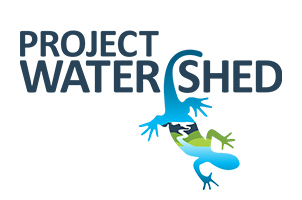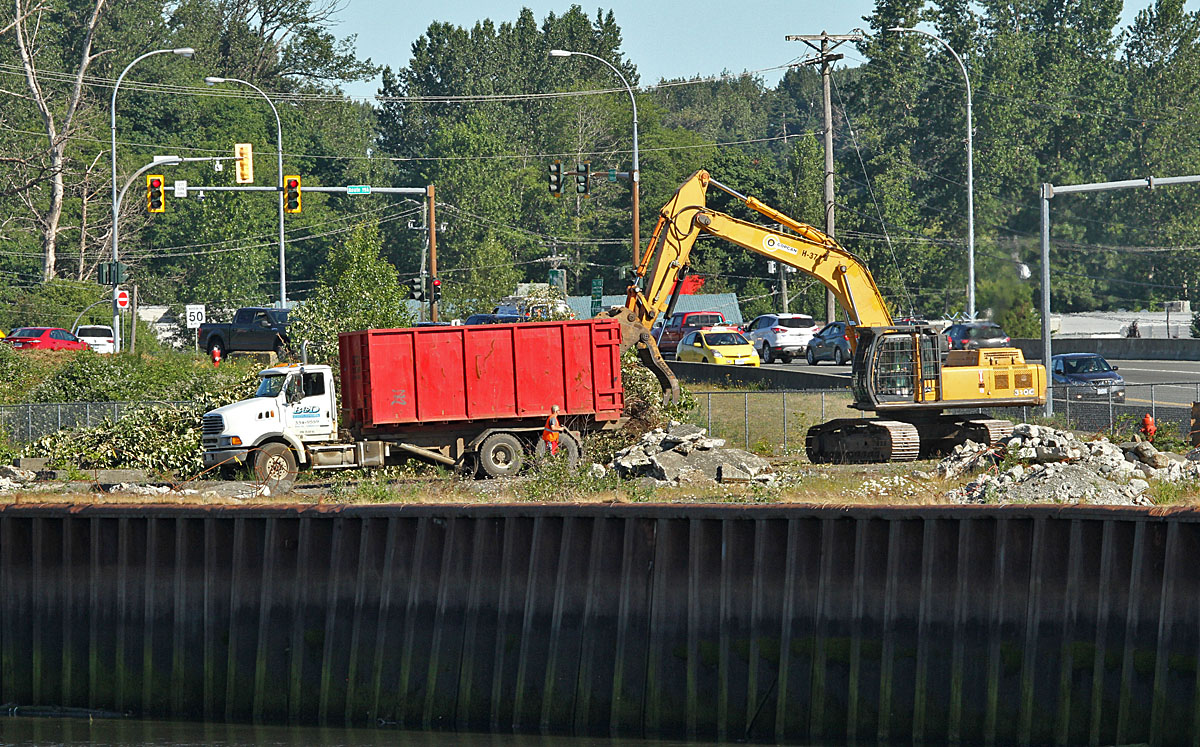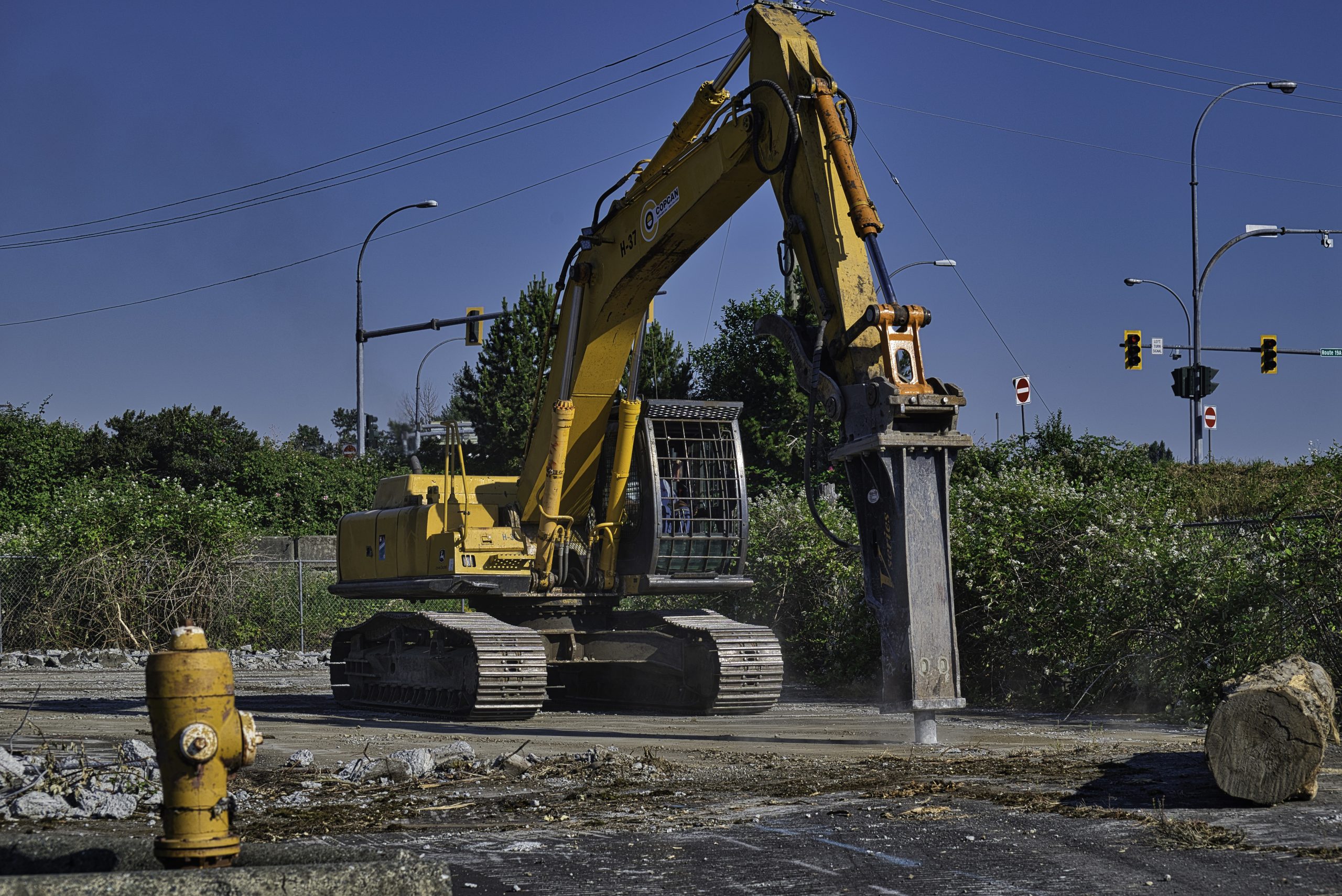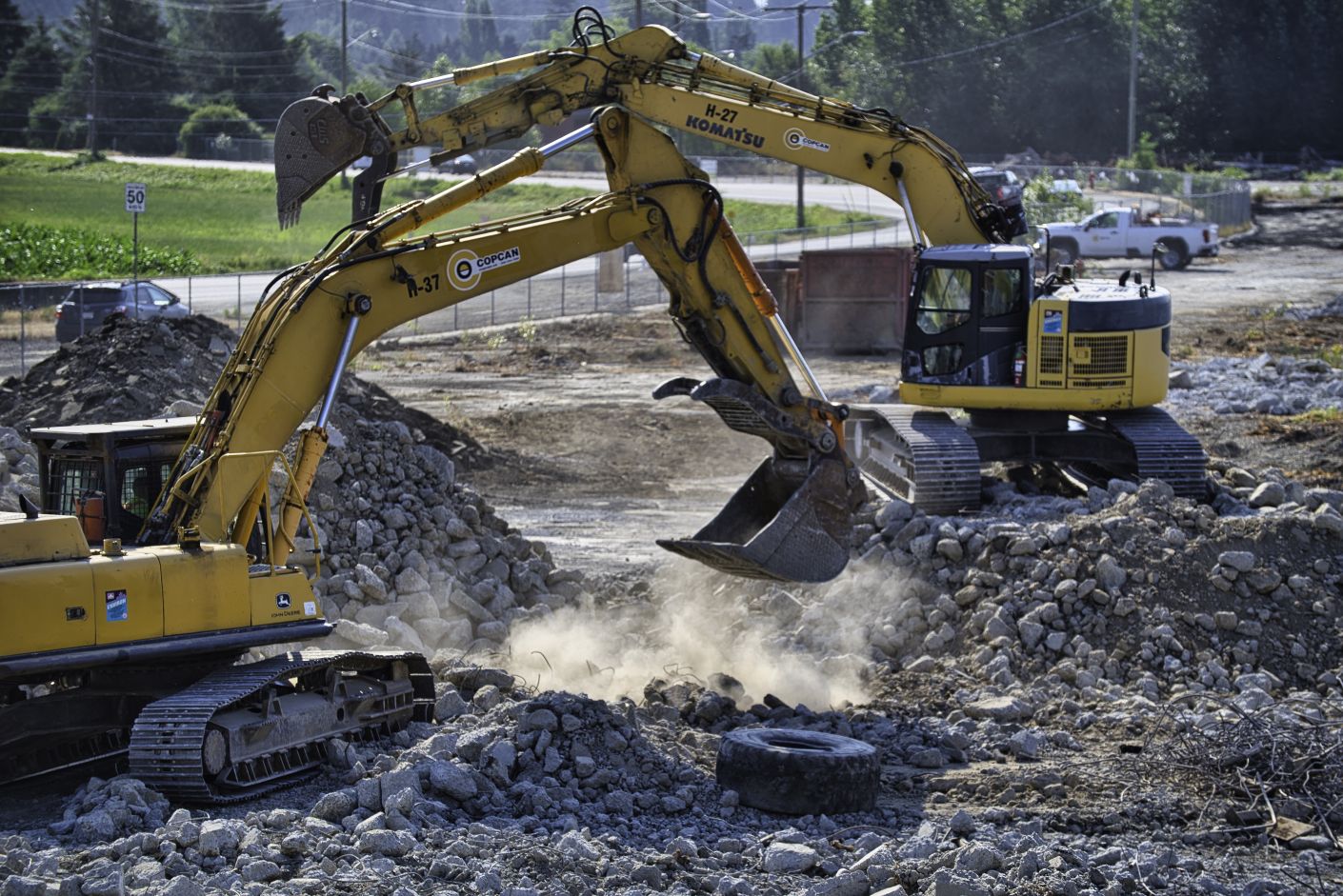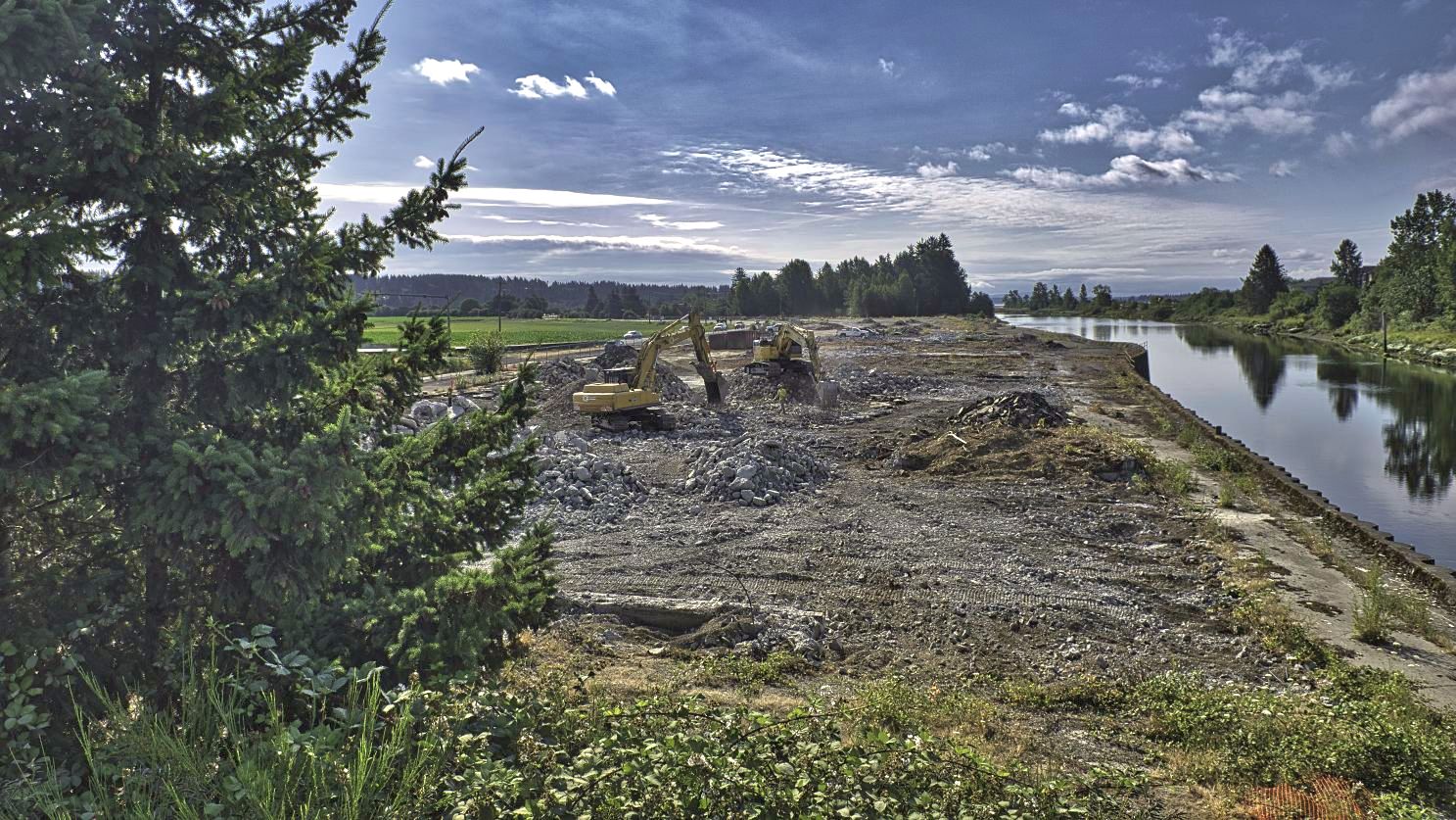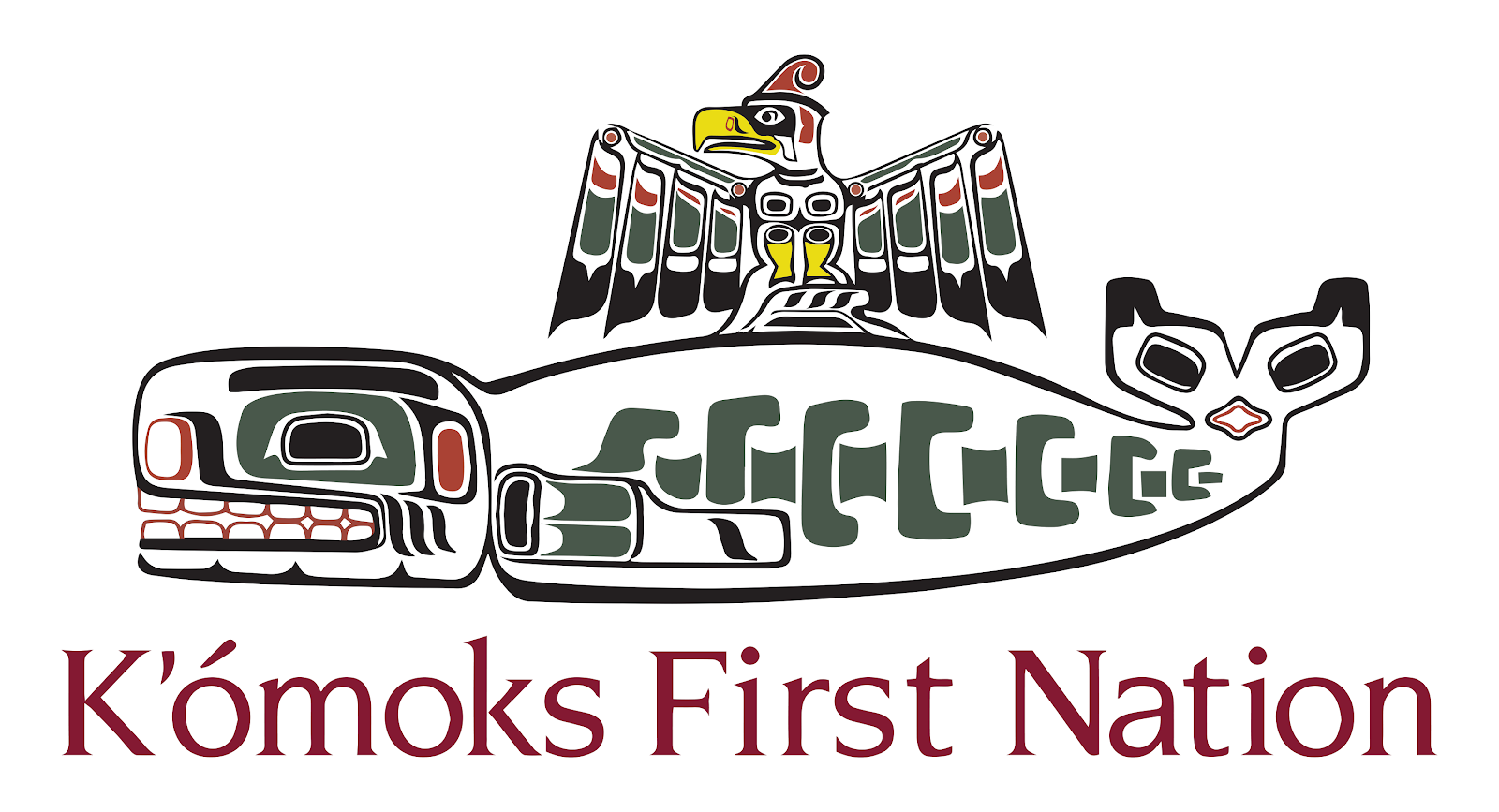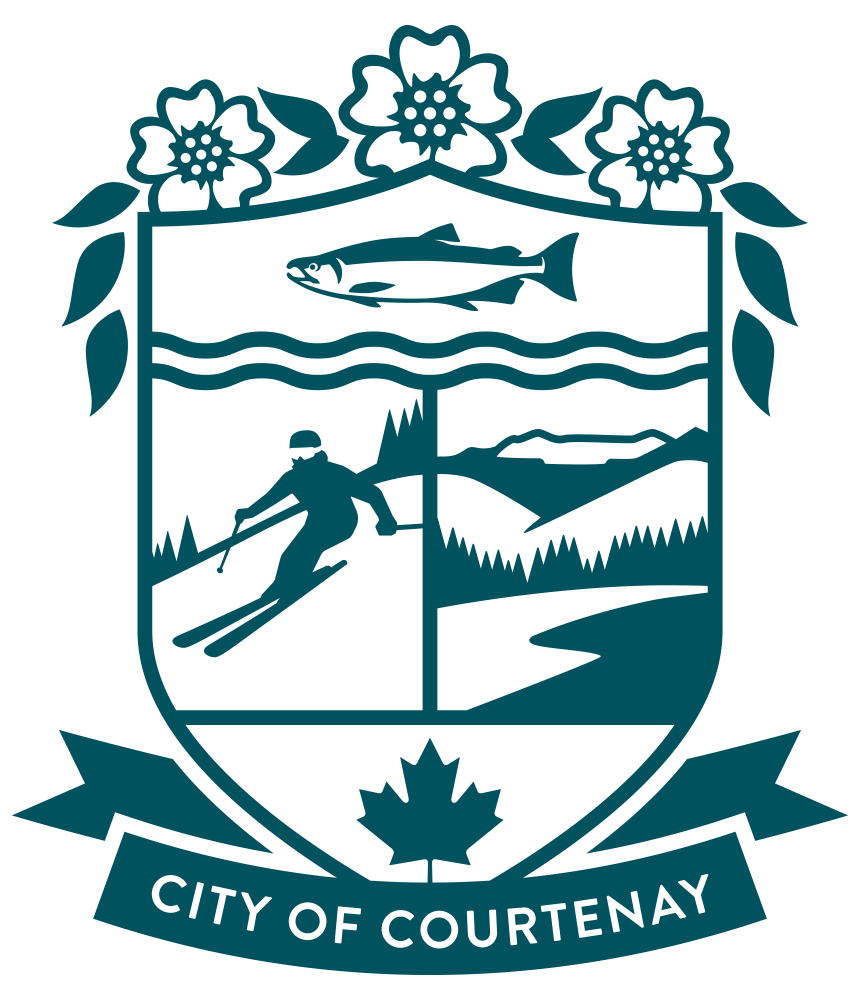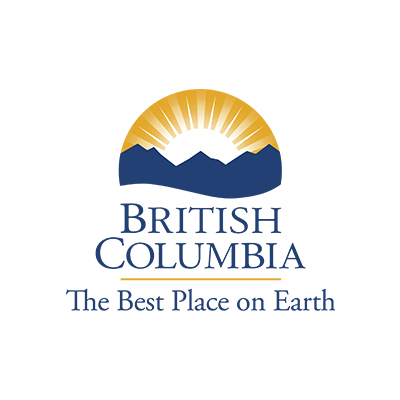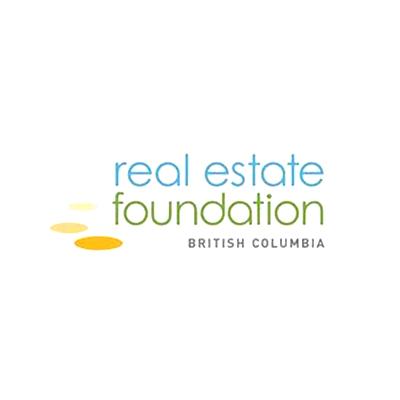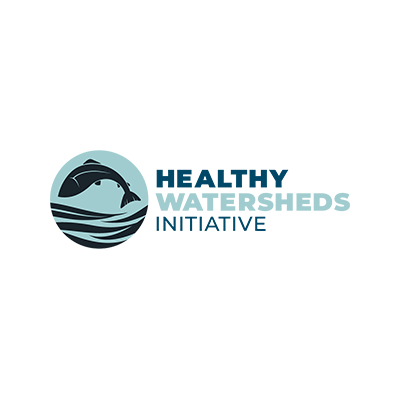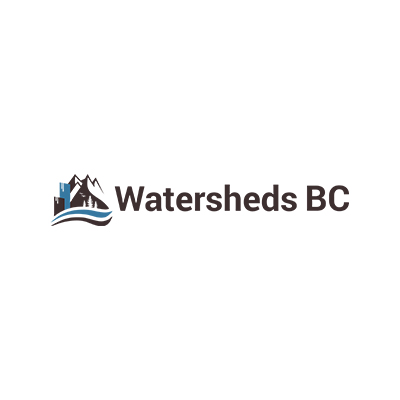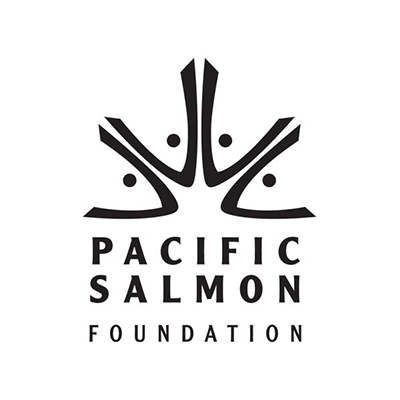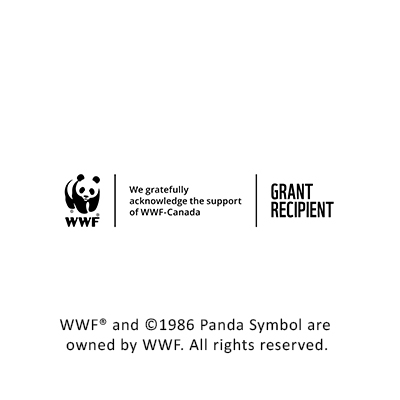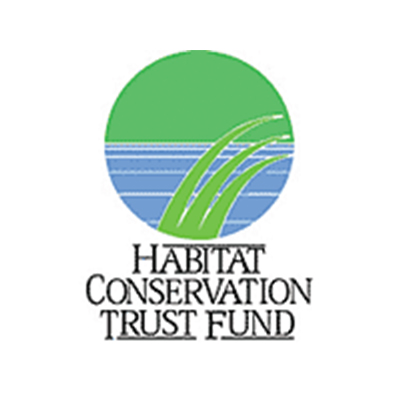Kus-kus-sum Progress Update – August 2021
Vegetation removal at Kus-kus-sum ~ G Fairbrother
Punching holes in the concrete ~ N Prince
Two excavators processing concrete at Kus-kus-sum~ N Prince
Concrete over concrete ~ C Holbrook
Concrete removal progress at Kus-kus-sum as seen from the 17th Street bridge~ N Prince
The first order of business was for Copcan Civil Ltd. to remove the vegetation on site. This process went smoothly and was completed within two days. The group of trees at the south end of the site was left intact and we will integrate this with future plantings. Having previously established trees on the site will help protect the site from erosion, provide shade for newly planted vegetation, and help propagate a native seed bank.
Once the vegetation was removed, the hard surface removal could begin. The hard surfacing on site is a combination of concrete and asphalt. In some areas the asphalt was laid over top of a concrete layer. In these areas, the asphalt was scrapped off to allow access to the concrete below. This was done along the fence line during the first week, along with the delineation of the work boundary, and will continue where areas such as this are encountered. The asphalt will be piled up throughout the summer and kept on site until it is all ready to be trucked offsite and recycled.
The excavator that was mobilized to the site began breaking and ripping up the concrete once the asphalt was dealt with. A bucket attachment was used to separate the exposed concrete from the structural rebar. The rebar was sorted out and piled until metal bins from ABC recycling arrived. All metal pulled out of the concrete is being placed in these bins, which are trucked off site once full, and replaced with empty bins (click here for more information on the metal recycling). A week and a half later, another excavator arrived, along with additional excavator attachments to facilitate processing the concrete. With two excavators working, we started to make notable progress.
The excavators encountered an abundance of thick concrete at the north end of the site, adjacent to the 17th Street Bridge. In some places the concrete footings were over a meter deep and in others there were multiple layers of concrete layered on top of each other. This caused the work at the north end of the site to take a little more time, but as we moved towards the middle section of the site, work proved less complicated and has proceeded quite quickly.
To date the excavators have broken and piled up more than half of the concrete that covered the 8.3 acres of the site. Soon, a concrete crusher will be mobilized to the site. The crusher will crush the concrete to a specific size that makes it very useful to be re-purposed as road base or back fill.
We couldn’t have gotten this far into this work without our many generous funders. We’d like to recognize some of the significant grants and contributions we have received this year, including the Provincial Healthy Watersheds Initiative Funding, World Wildlife Fund, Fish and Wildlife Compensation Program, Habitat Compensation Trust Fund, Pacific Salmon Foundation and the Micah Messent Legacy Fund. For a full list of funders, please see our updated Friends of Kus-kus-sum page.
At this point, we have secured approximately 30% of the $4.5 million needed to fully realize this restoration project. If you have been thinking about donating, please reach out, and if you have any interesting ideas on fundraising that you’d like to support or share with us, just let us know! We sincerely appreciate every contribution that comes our way, and look forward to using the funding we receive to support our local economy in creating a long-lasting community asset for the Comox Valley.
Thank you for your continued support and interest in Kus-kus-sum, if you have any questions feel free to contact us at projectwatershed@gmail.com.
Ephemeral rebar sculpture ~ C Holbrook
Disappearing rebar sculpture ~ C Holbrook
Restoration Partners & Sponsors
Related Posts
Mallard Creek Restoration Update for 2024
Restoration work in Mallard Creek will continue this year, including invasive removal, restoring connectivity, and trial planting of a new riparian species. Volunteer events starting in September 2024.
Volunteer at Kus-kus-sum Chamber of Commerce Event
We are showing Kus-kus-sum off to businesses in the Valley through a Chamber Business to Business event. We are looking for a few volunteers to assist with this event.
Coastal Plant Monitoring
Get involved with our new vegetation community science monitoring program!
Spring Field Trips
Throughout May and June Project Watershed will be taking elementary school classes out on field trips to learn about estuary and coastal ecology and to assist with planting and plant maintenance.
Working Together to Identify Forage Fish Spawning Beaches
This year marks the 5th year of a partnership between Comox Valley Project Watershed Society and North Island College on a long-term study to examine intertidal spawning habitats of forage fish in the northern Salish Sea.
Glen Urquhart Update – Spring 2024
Latest news from Glen Urquhart restoration progress for spring 2024.

